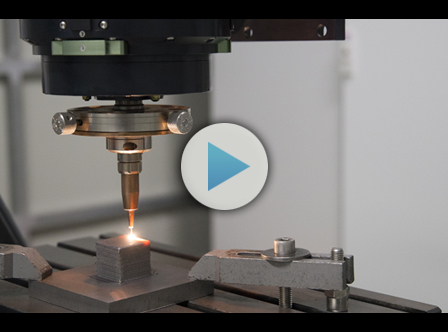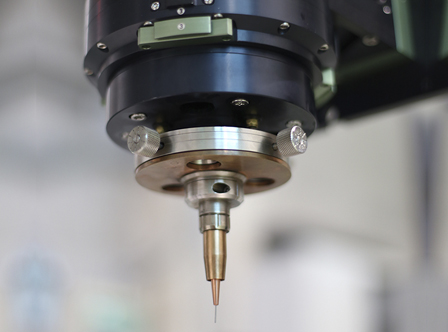PROJECTS
Both the high efficiency and flexibility of wire LMD and lower costs resulting from using less raw materials have caught the industry's attention.
Manufacturing processes of metal components that use 3D printing and wire deposition represent one of the most promising technologies as regards making very large parts in sectors such as the aeronautical business. The energy sector believes they provide an efficient alternative method to repair components and apply deposition material and coatings.
Although it is a relatively new technology, especially bearing mind that the first coaxial wire deposition heads were commercialised in 2017, features like high process efficiency, materials with improved structural quality, enhanced system resilience, freedom of movements and lower costs incurred in terms of raw material have attracted the industry's attention.
Direct laser metal deposition, also known as laser cladding or laser metal deposition (LMD), has been traditionally applied by means of metal powder. The recent development, however, of specific wire heads has caught the industry's attention because of their higher competitiveness.
There are several universities and European technology centres, including IK4-TEKNIKER, that are currently working to develop and market concentric wire heads.
Compared to powder, this system is clearly more advantageous as it delivers 100% of process mass efficiency, whereas powder only ranges between 60-80%. It also improves the structural quality of the material deposited thanks to lower levels of gas and pore entrapment.
Thanks to these features, the LMD concentric wire technology has a very promising future as an additive technology to manufacture large structural components in aeronautical and power applications.
Since the arrival of additive manufacturing technologies in the market, the aeronautical sector has used them to manufacture high added value components by means of hybrid processes that combine conventional systems with cutting-edge techniques as it is more competitive to deposit a preform to be subsequently machined instead of machining the entire volume using a solid block as a starting point.
As regards hybrid manufacturing of components, the biggest obstacle is related to guaranteeing structural quality. In this regard, additive technologies based on direct wire melting using an electric arc WAAM (Wire Arc Additive Manufacturing) or an electron beam EBAM (Electron Beam Additive Manufacturing) are already being applied in the aeronautical and defence sectors.
The arrival, however, of the LMD concentric wire technique offers a number of advantages compared to the above mentioned options such as a lower dilution of the material deposited on the base material and more control in terms of how heat is applied. These features provide a preform of the component to be machined that is better adapted to the end part with wire LMD compared to WAAM or EBAM.
Additionally, and as heat can be applied in a more controlled manner, there is less distortion associated with the solidification process meaning that less raw materials are used. Consequently, it has been estimated that LMD processes can be 15 to 30% more efficient as regards obtaining near-net-shape geometries compared to those made by means of WAAM or EBAM.
IK4-TEKNIKER has an extensive track record in terms of laser technology that has been included in the range of options offered by the “Laser for Manufacturing Lab” focused, among other things, on applying additive LMD manufacturing, on its two main arms: powder and wire deposition material.
In this field, the technology centre is working on several R&D&I projects such as the ADDIMAX initiative whose aim is to build a very large 3D printing machine for titanium components and oxygen reactives, or the ADDIECO project whose goal is to manufacture titanium components for the aeronautical sector in a more sustainable and environmentally friendly manner.
In this way, the technology centre's offer includes, among other things, the fine-tuning of LMD processes, the making of prototypes and short production runs, the design and manufacture of equipment, counselling and training.
The Laser for Manufacturing Lab also offers the option of developing complete solutions and components for LMD, including the hybridisation of this technology with conventional machining processes.
IK4-TEKNIKER also offers technical advice services as well as feasibility and characterisation studies for strategic sectors dealing with aeronautics, renewables and fossil fuels.





